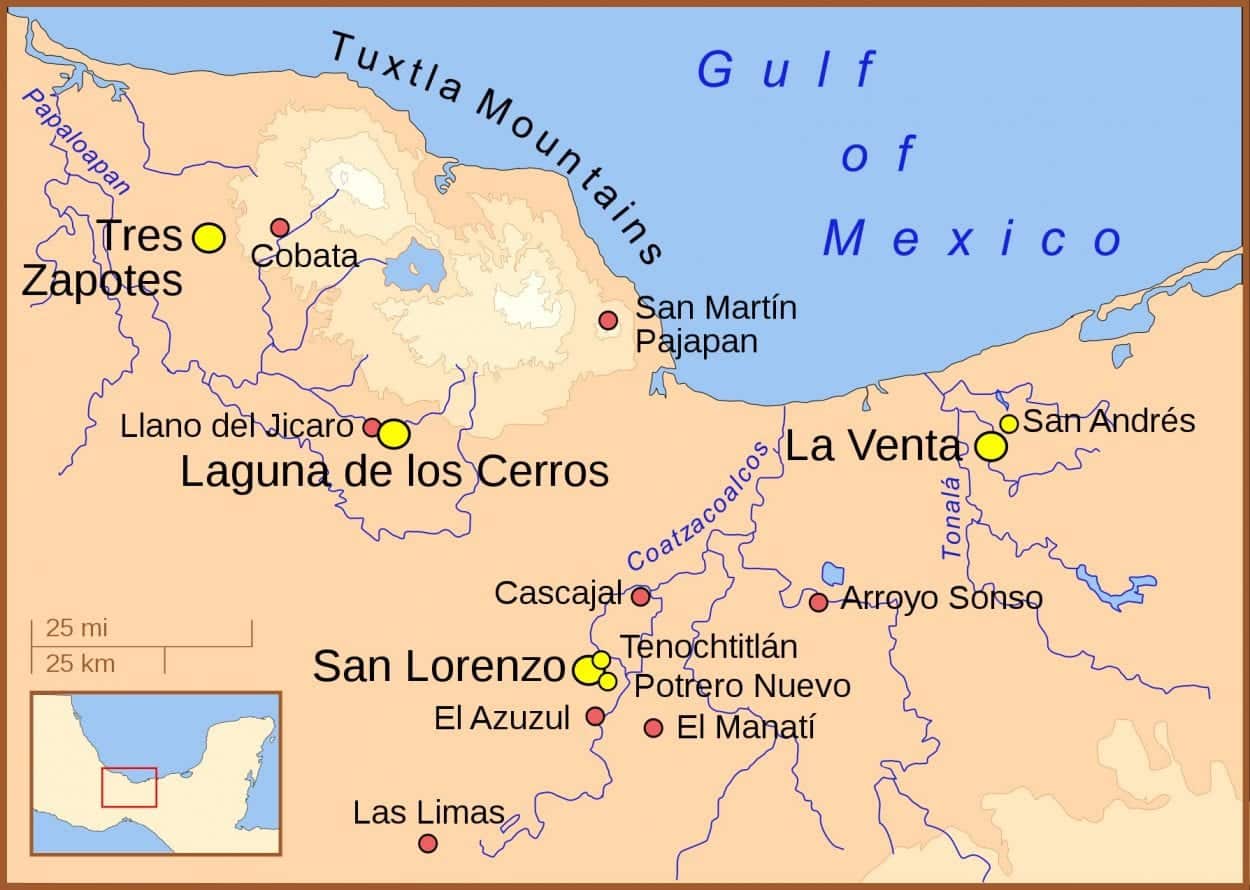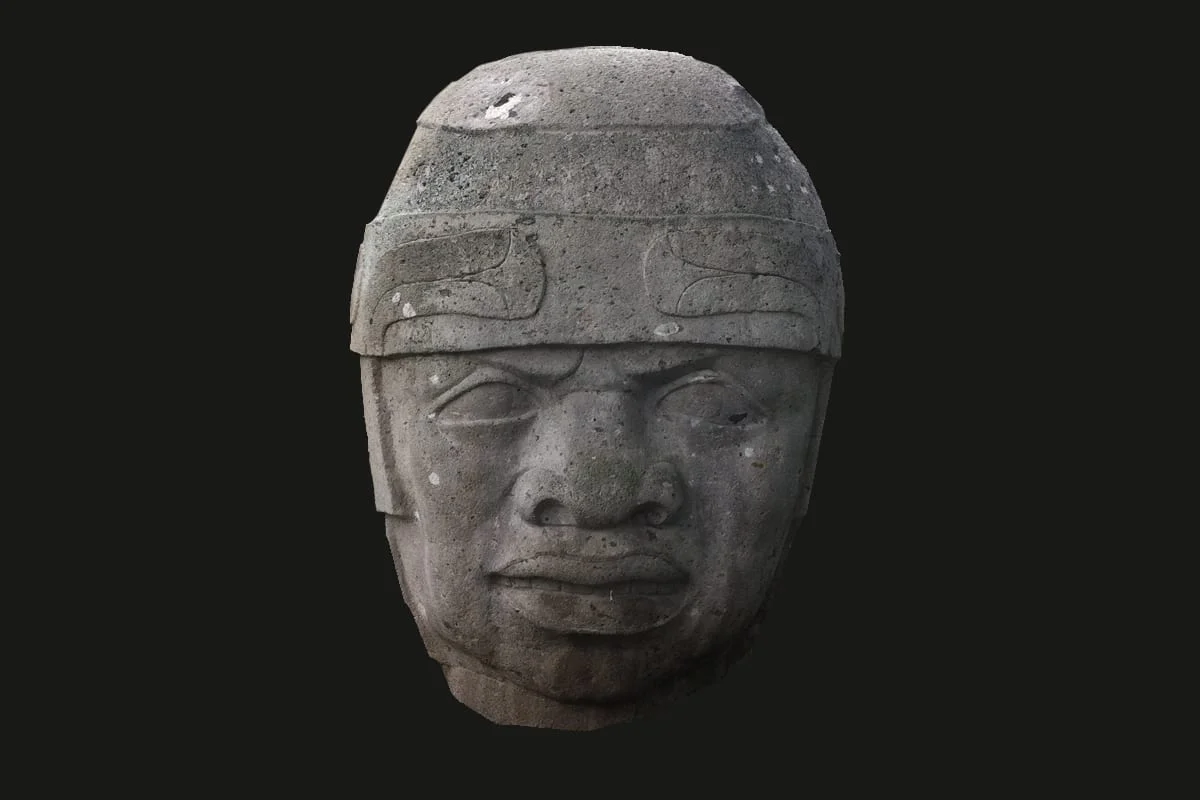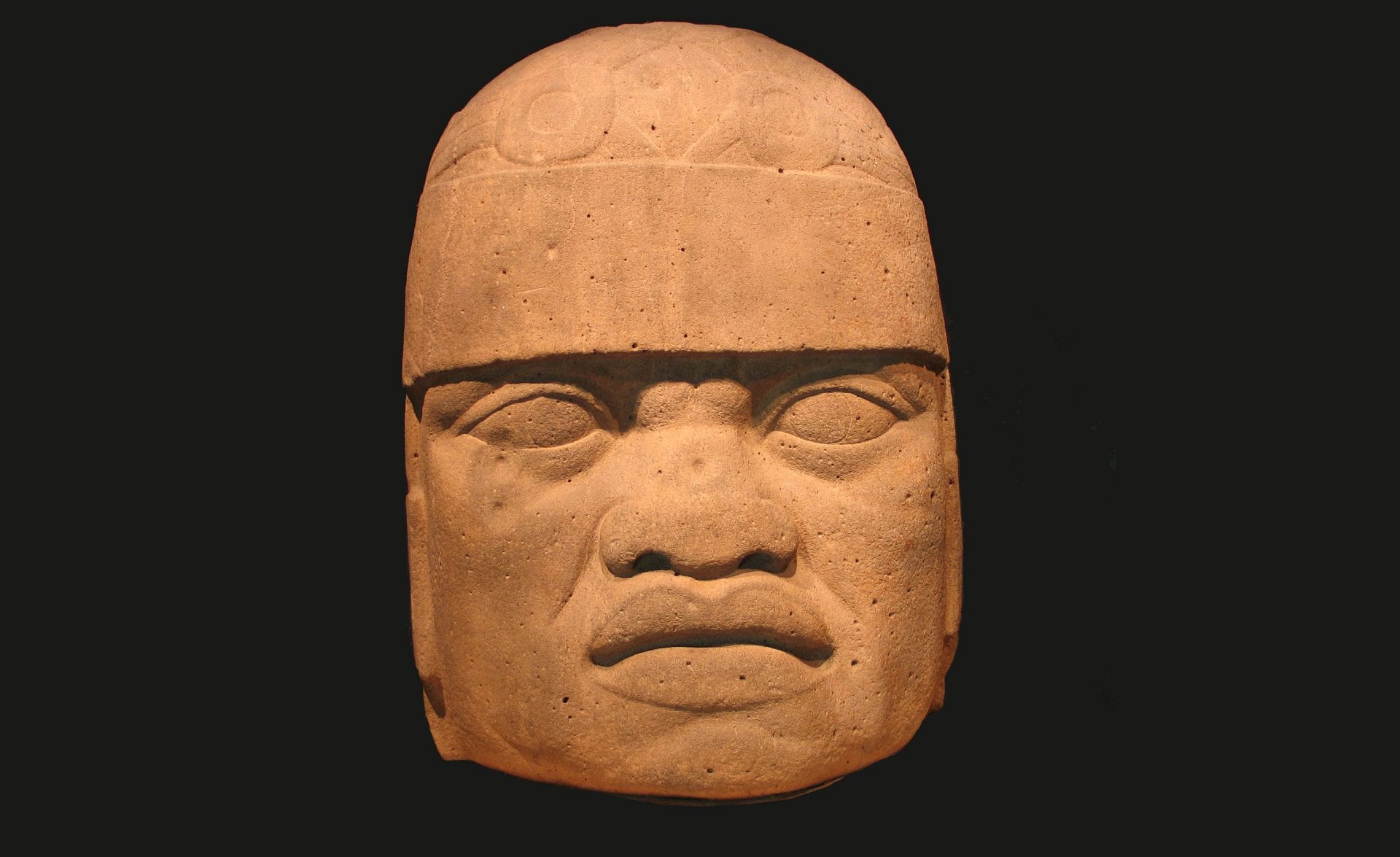San Lorenzo Tenochtitlán is the collective name for San Lorenzo, Tenochtitlán (not to be confused with the Aztec Tenochtitlán) and Potrero Nuevo, a collection of ancient sites which culminate the major centre of Olmec culture from 1200 BC to 900 BC.
“San Lorenzo Tenochtitlán” was coined by archaeologist Matthew Stirling in 1955, who begun excavating the area in 1938, and named the cluster of settlements after the nearby present-day villages.
The Olmec are the earliest known Mesoamerican civilisation (also referred to as the “mother culture” of Mesoamerica), having emerged in the present-day Mexican states of Veracruz and Tabasco during Mesoamerica’s formative period (1800-900 BC), with the subsequent periods being defined as the Middle Formative (900-400 BC), and the Late Formative (400 BC-AD200).
The rise of the Olmec at San Lorenzo Tenochtitlán can be associated to the local ecology of well-watered alluvial soil that supported a rich agricultural system, as well as by the transportation network provided by the Coatzacoalcos river basin that encouraged the permanent settlement and development of the first Olmec centre that demonstrated a level of state complexity.

The site is situated on a plateau where the elites lived in large structures raised on low clay platforms. The common folk lived on the slopes of the plateau in thatched wattle–and-daub houses, stepping down to a level 40m below the summit to the lowland farmland that encircled San Lorenzo.
The summit also contained monumental stone thrones and colossal heads, representing leaders from a society based on a chiefdom-level of organisation. The heads were carved from large boulders transported over 93 miles from the Sierra de Los Tuxtlas mountains on the south-eastern Veracruz Gulf coast, and eventually placed in linear lines running across the site forming a possible processional route.

The movement of the giant boulders and exotic raw materials brought into San Lorenzo from distant regions, as well as the export of various types of pottery and figurines to other areas in Mesoamerica, suggests that the early Olmec controlled a large trading network.
San Lorenzo continued to be occupied until the 10th century BC, with its decline coinciding with the rise of the Olmec centre of La Venta in Tabasco. There are various theories for the abandonment, with researchers proposing localised warfare, environmental changes, economic decline, and the emergence of rival centers, although multiple causes are also likely.
Header Image – San Lorenzo Colossal Head 6 – Image Credit: Luidger – CC BY-SA 3.0





